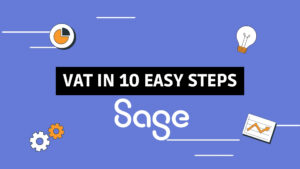Have you ever had a brilliant idea that may turn into a lucrative business? In most cases what follows is the planning phase to materialize the dream into a business. Most people are running through the plan in their head. Very few put something down on paper. The key elements of a business plan that all entrepreneurs should know can be summarised in the 8P’s of a business plan.
The business plan is that infamous document most bankers and investors are looking for before dishing out loans or before investing. For most start-up entrepreneurs slaying the “business-plan-dragon” is a very cumbersome death-defying task. Yet it is the most important phase and part of your business venture that may guarantee future success.
By placing your ideas on paper, more opportunities can arise that you may have been unaware of, also certain risks and hidden obstacles come to the forefront that you may have disregarded during the moment of inspiration of being your own boss.
Compiling a business plan is actually not as difficult as it seems. It’s better to get your idea somehow formatted on paper before taking the leap of faith and resigning from your job.
The following are the key elements of a business plan that all entrepreneurs should know. These core elements are present in all businesses and can be applied to every business situation whether it is an online or a traditional brick-and-mortar business.
A simple way to remember the key elements of a successful business and business plan is to think in terms of the 8P’s.
P1-Profit
I mention profit first because that is the driving force for most entrepreneurs. The end goal of business is profit-making. How much profit will be attained is part of the goal-setting. Setting the bar realistically within your means is key. Although I mentioned profit first as goal setting, you will have to consider your other aspects of the business as well.
- Profit equates to the financial plan.
- Setting the numbers. How many sales? what will be the costs? of your products and how much will be the other overhead expenses?
- Answering the question of how much investment in assets will be required? The type of assets and how are you going to finance this?
- The end result is a cash-flow analysis for the first 1-12 months and then for years 2 – 5.
P2-Product
Business success depends on your ability to understand the product that you plan to sell. To be able to define it clearly and to know where it fits in Maslow’s hierarchy.
- Define your product or products in detail.
- What are the product’s characteristics?
- What problem does your product solve?
- Is your product a service?
- Is there a need for your product? Will your product serve an important purpose that will create a demand for it?
- Where does your product fall within the Maslow hierarchy of needs?
- Does your product fulfill Physiological needs, Safety needs, Love and belonging, Esteem, or Self-actualization?
- The lower end of Maslow’s hierarchy is human needs that are imperative for survival. Common products would be agriculture, food processing, food distribution and outlets, clothing and shelter. People will always need these products. It doesn’t matter where they are, or how poor or rich they are.
- As we move up the hierarchy the more complex will your product offering be as it focuses on less physiological and more emotional fulfillment of human needs?
P3-People: Who are our ideal Customers?

An understanding of who the people are that you are selling your products or services to. You can lose a lot of money attempting to sell to people what you think they want, rather than what they are really looking for. Many people refer to this as their market or market segment. Your customers are exchanging their money to fulfill a need that they have.
- Who are the customers that your product is the most suitable for?
- What are their demographics (old, young, male, female)?
- Where are they? What is their geographic location?
- Why would they be attracted to your product? What are their needs and why would they be attracted to your product?
P4-Key Processes: The what, how, when and who performs certain functions in the business?
Answering the questions yourself of:
- What this business is doing;
- How is this business going to do it;
- When is it going to be done;
- And by who is going to be done.
Apply each of the above questions to:
- Strategic decisions: Planning, legal, ownership and direction.
- Products and services.
- Customers/clients: Marketing.
- Supply chain management and suppliers.
- Inventory keeping and distribution.
- Administration.
- Human resources.
P5-Placement: Who will be needed to get the job done?
You need to consider your own skills first. Then, in which areas do you need to do to sharpen your skills. What other human resources will be required within the key processes of the business mentioned above.
Consideration to master the key skills yourself before you hand it over to an employee, or before you outsource it. Do you know and understand the core processes that drive the business? If not, where can you get the knowledge?
If the skill that you require is beyond your abilities you will have to outsource it or employ someone. You may need graphic design, or programming or complex engineering skills that you don’t have. A golden rule is to first look for outsourcing opportunities before employing. Termination of an outsourced supplier is much easier than terminating an employment contract. Also, will you have enough work available to warrant full-time employment? Consider the different costs of outsourcing vs employment and the benefits and risk associated with both.
Involve family members and ask for their input. Be careful of free advice, because free advice is easy to give by people who don’t have authority about the subject matter.
P6-Place: Where will my products and services be distributed?
Define the business geographically and in terms of the type of customers. Will your solution be delivered to the local market, national or international market. Will you keep stock or will you dropship the products?
Define your source from local suppliers, national or international. What is the availability of your products from different suppliers? What is the price differentiation between your suppliers and the type of suppliers whether local or international?
Define your business model among the various options as to wholesale, retail or services.
Will there be warehousing involved? What is the availability of warehousing and the costs associated?
The occupancy of premises is part of this decision-making process.
P7-Pricing
Perform a comparative analysis of prices in the market. Determine the price range of different products. Consider the quality aspect of the different products in relation to the price and then decide in which price category your products fall.
As part of this process, you will analyse the competition and their pricing. You will layout your products’ good and bad qualities in comparison to the competition and price then accordingly.
Also recognise the importance of the quantity that will be sold and the effect this will have on the price.
Go one step back and look at the position of your business in the supply chain. You might find that you are on top of the supply chain and are therefore able to move big quantities but this might impact on your price and result in a lower price than you can charge and a lower profit margin.
P8-Promotion

In this part of your plan, you will give thought to your marketing plan. You will now consider the following to reach your market segment and give attention to:
- Website and ranking in internet search engines.
- Brand name, colours, logo and stationery.
- Physical name boards.
- Email marketing, database list building or acquiring of a database.
- Local citations.
- Reviews and customer testimonials.
- Social media marketing.
- Self-marketing, the use of affiliate marketers or influencers.
- Do you need to employ salespeople or representatives?
The appointment of a marketing agency to assist with all of the above or certain aspects thereof might be a solution. If you start the business with little resources, mastering the above can be achieved relatively easily with online marketing learning.
Conclusion
We have covered some of the key elements that you need to consider when devising a business plan.
The categories of a business can be summarised in the 8P’s which are:
P1: Profit – The financial plan and forecast
P2: Product – Defining the product or service that you plan to sell
P3: People – Your ideal customers.
P4: Key Processes – The operations of the business.
P5: Placement – Who is going to do what.
P6: Place – Where are you going to sell your product and where will it be stored.
P7: Pricing – How much will it cost and what quantities.
P8: Promotion – The marketing plan.







